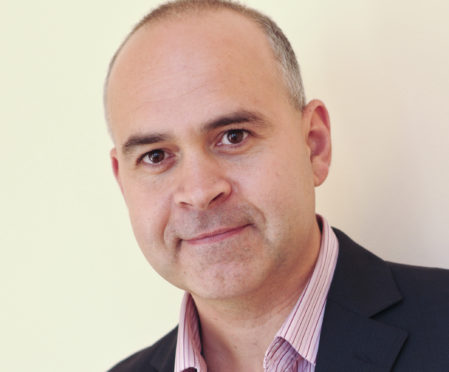Molly Russell was just 14 years old when she took her own life in 2017 and her story has resurfaced in the news last month after it was discovered that she was receiving self-harm related content online.
The NHS estimates that 10 per cent of young people harm themselves at some point in their lives. As a father, it is frightening to realise that the number of young people ending up in hospital beds due to self-harm is increasing and rightly the subject is fast becoming a mainstream subject.
“Momo,” hoax or not, has brought the issue of self-harm and the danger of its online promotion sharply into focus this week, so today being Self-injury Awareness Day (SIAD) couldn’t have come at a better time. It provides an opportunity to raise awareness and ask, what is self-harm, and what can we do to help those who may be at risk.
Why self-harm?
Self-injury is usually triggered by overwhelming negative emotions and results in the person physically hurting themselves, or in the extreme case of Molly Russell, committing suicide. Self-harm is a physical response to emotional pain and the action of inflicting pain is often addictive by nature. It is often a cry for help and some sufferers view it as self-punishment for things they feel they have done wrong. Whatever the reason it is used as a distraction or a way of masking emotional pain.
Who is at risk?
Studies show that girls are more likely to self-harm than boys. However there are other behaviours that boys can exhibit – such as punching a wall- that are also self-destructive but are not always identified as self-harm. The number of girls under 18 admitted to hospital for self-harming has doubled. A 2018 study found that 22 percent of 14 year old girls were reported as self-harming. One explanation for why girls are more at risk could be due to low self-esteem, possibly brought about by high social expectations related to images in the media. Other triggers include difficulties in relationships such as a strained parent-daughter relationships, or bullying by peers. Mental health disorders and difficult relationships with friends and/or family can be causes for both boys and girls.
What to look out for?
People who self-harm may sustain injuries from cutting, burning or pinching, and may even poison themselves. Due to the addictive nature of self-harming, people who engage will often try and hide their injuries so that they can continue to engage in the behaviour. Signs to look out for include unexplained cuts, bruises or burns, efforts to cover up, even when it’s hot outside, signs of depression and even signs they have been pulling out their hair.
What can you do?
Talking is always the best starting point. Creating an environment for your child to be able to talk openly, unjudged whether it be with you or a close family friend or counsellor to establish the scale of the issue and the core issues they are struggling with. In addition, parents can manage their child’s online behaviour by using parental controls to ensure that harmful content can’t be targeted. Parents can also talk with their children about media influence and help them understand critical thinking and gaining more of a balance and control on the media content they are exposed to. Encouraging off-line, face to face relationships with friends to help alleviate possible loneliness issues and creating healthier and more natural interaction is very therapeutic – for everyone, not just our kids.
What treatment is available?
Self-harm is a sensitive and upsetting topic and one that parents can find hard to know how to approach and manage by themselves, but a pro-active response will help those in need to overcome what’s troubling them more quickly. Cognitive Behavioural Therapy (CBT) can help youngsters talk through their issues and teach them how to deal with their emotions in a positive and managed way. CBT has also been shown to help with depression, anxiety and suicidal thoughts, which can all coincide with self-harm. The good news is, self-harm is treatable and preventable as there are great resources out there to help sufferers cope better with their negative emotions and move forward with a healthier mindset and outlook.
Professor Ewan Gillon is a chartered psychologist and Clinical Director of First Psychology Scotland with centres in Aberdeen, Inverness, Perth, Dundee, Glasgow, Edinburgh and Borders.
